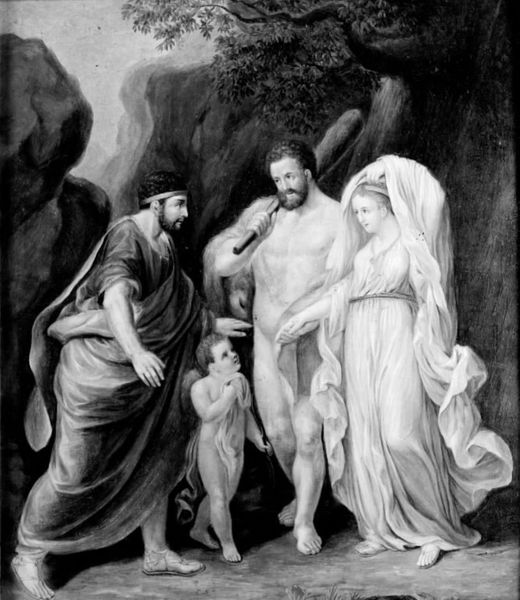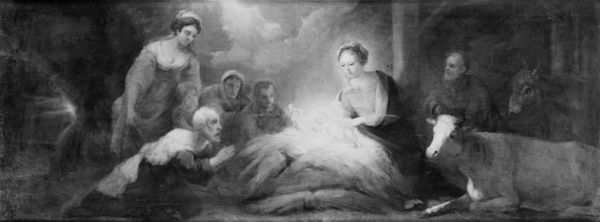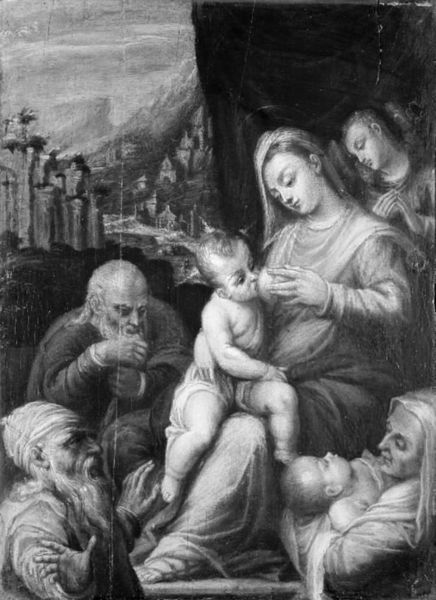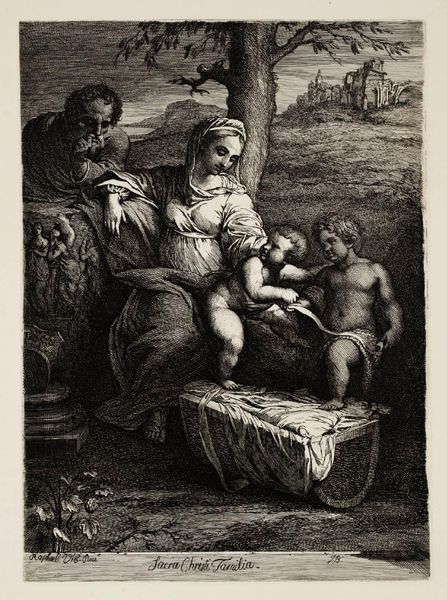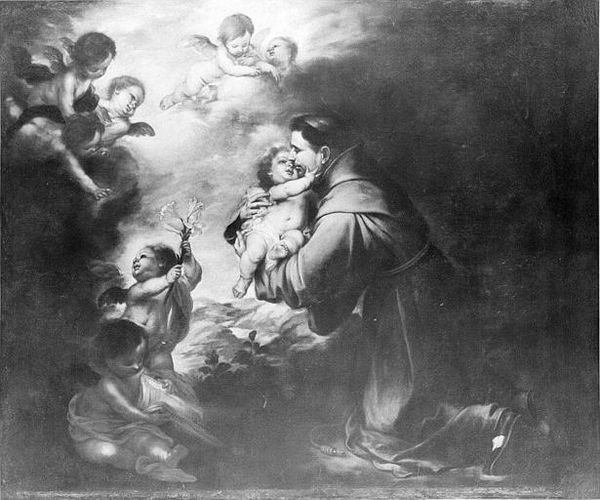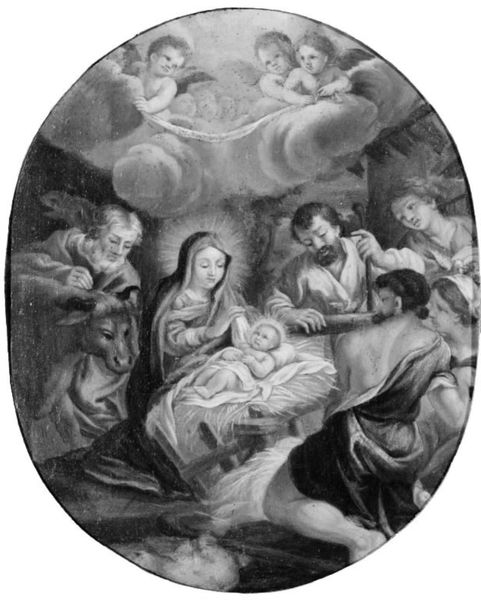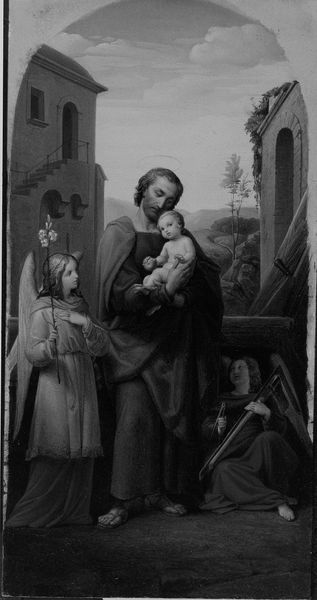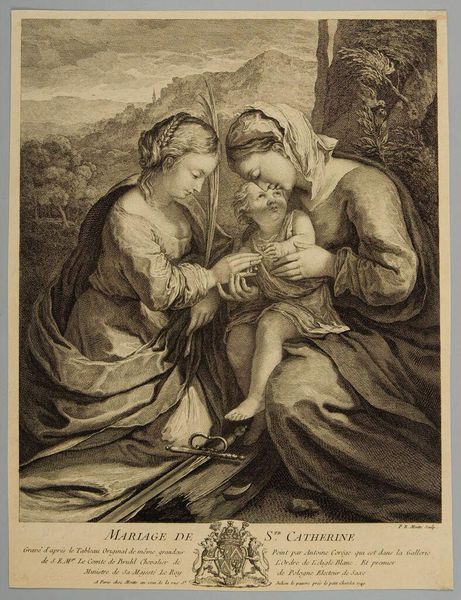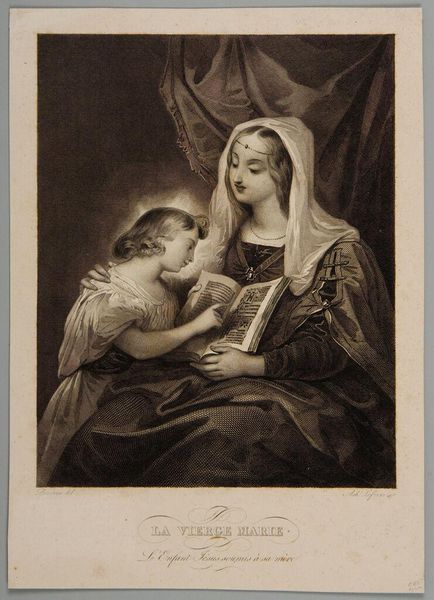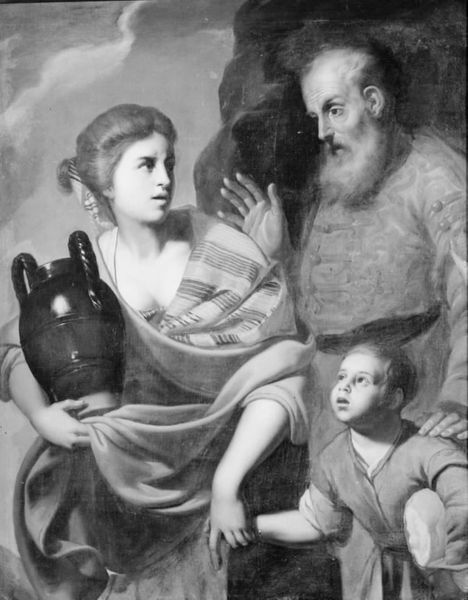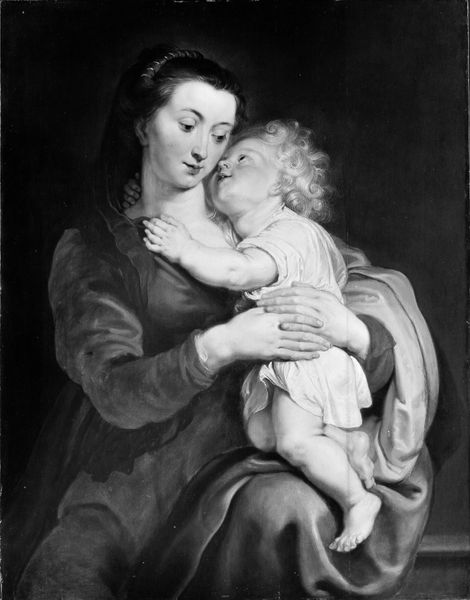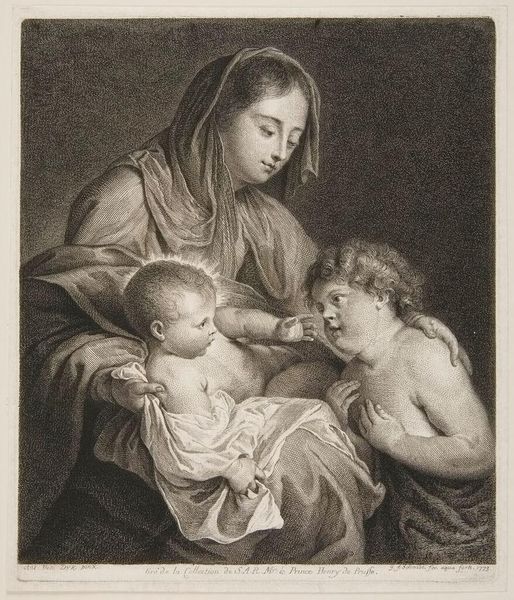
painting, canvas
#
portrait
#
painting
#
figuration
#
canvas
#
romanticism
#
black and white
#
history-painting
#
monochrome
#
monochrome
Dimensions: 215 cm (height) x 169 cm (width) (Netto)
Curator: Looking at this canvas, my first thought goes to how intensely lit it is. There is a radiance that almost washes away the darker tones, creating a really interesting mood of quiet spirituality. Editor: We’re observing "The Holy Family" by Carl Christian Seydewitz. Its creation date falls somewhere between 1792 and 1827. This oil painting on canvas, held here at the SMK, invites us into a carefully constructed tableau vivant. Curator: I immediately notice the black-and-white palette. Or maybe monochrome is more precise. Stripping away colour really concentrates our focus. What do you think it adds, beyond the obvious historical feel? Editor: Colour, of course, speaks to the senses, while its absence guides us into introspection. We’re directed to focus on form, and the gentle undulation of draped figures under the leafy arch of a tree. Seydewitz's style is very evocative of Romanticism, with its focus on emotion and idealisation. He’s definitely playing with symbols there. Curator: Oh, the symbolism is rich! This feels like an archetype. Notice how Mary’s gaze and posture suggests both protective tenderness and sorrowful foresight. It really reinforces that loaded idea of divine innocence confronted by mortality. Editor: Yes, and what about Joseph offering a bundle of grapes? Depending on interpretation, they are symbols both of abundance and of sacrifice through Christ's blood. I keep returning to that tension between innocence and inevitability; it’s powerful stuff. Curator: Agreed, the figures feel placed within this landscape almost like classical statuary – that idealisation taken directly from antiquity! We see echoes, too, of earlier religious depictions; Madonna and Child compositions abound in art history. But Seydewitz is attempting a deeply human moment as well, yes? A tender familial circle cast in monochrome reflection. Editor: Exactly. It encourages one to meditate not just on the immediate narrative, but the broader, almost eternal human questions about family, faith, and fate. It is, after all, more than just religious illustration. Seydewitz manages to weave a timeless contemplation from a very specific cultural image. Curator: What resonates is that the painting serves not only as a symbol of religious significance, but a cultural representation of something almost universal: the quiet, introspective moments between a family unit. It’s those shared private gestures and gazes that bring out the deeper, and often unsaid connections between one another.
Comments
No comments
Be the first to comment and join the conversation on the ultimate creative platform.
